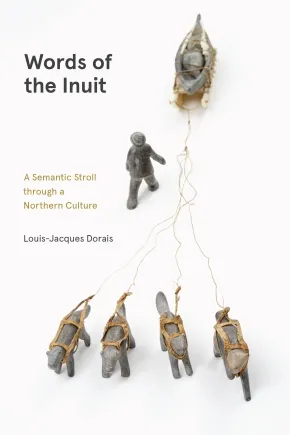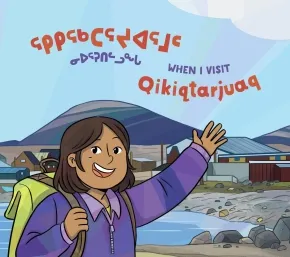Inuktitut
Books (1)
Synopsis:
Words of the Inuit is an important compendium of Inuit culture illustrated through Inuit words. It brings the sum of the author’s decades of experience and engagement with Inuit and Inuktitut to bear on what he fashions as an amiable, leisurely stroll through words and meanings.
Inuit words are often more complex than English words and frequently contain small units of meaning that add up to convey a larger sensibility. Dorais’ lexical and semantic analyses and reconstructions are not overly technical, yet they reliably evince connections and underlying significations that allow for an in-depth reflection on the richness of Inuit linguistic and cultural heritage and identity. An appendix on the polysynthetic character of Inuit languages includes more detailed grammatical description of interest to more specialist readers.
Organized thematically, the book tours the histories and meanings of the words to illuminate numerous aspects of Inuit culture, including environment and the land; animals and subsistence activities; humans and spirits; family, kinship, and naming; the human body; and socializing with other people in the contemporary world. It concludes with a reflection on the usefulness for modern Inuit—especially youth and others looking to strengthen their cultural identity —to know about the underlying meanings embedded in their language and culture.
With recent reports alerting us to the declining use of the Inuit language in the North, Words of the Inuit is a timely contribution to understanding one of the world’s most resilient Indigenous languages.
Reviews
"Professor Dorais once again provides expert information and insight into the Inuit language and culture as only he can. This book is written so that academics, Inuit and the public can all learn more about the people who live in Canada’s most northern region. By examining the rich meanings contained within words of Inuktitut, Dorais details social nuances and core aspects of both traditional and modern Inuit culture.”— Alana Johns
Educator Information
Table of Contents
Introduction: Words from the Past, A Stroll Through Inuit Semantics
Ch. 1: Words for Speaking About the Environment and Land
Ch. 2: Words for Speaking About Animals and Subsistence Activities
Ch. 3: Words for Speaking About Humans and Animals
Ch. 4: Words for Speaking About Family, Kinship, and Naming
Ch. 5: Words for Speaking About the Human Body
Ch. 6: Words for Socializing in the Contemporary World
Conclusion: Words for the Future
Additional Information
344 pages | 6.00" x 9.00" | 2 maps, 2 figures, bibliography
Kids Books (2)
Synopsis:
Does your name have a story?
Kukik is named after her great-grandmother. Naullaq’s name honours his uncle. Panigusiq and Tegeapak have stories behind their names, too. Naming is an important practice to Inuit. This book follows four Inuit children as they explain the meanings of their names in simple language for young children to enjoy.
Written by four Inuit children who share their own stories about how they got their names, this bilingual storybook offers a unique look into Inuit traditional naming practices.
Educator Information
Recommended for ages 3 to 5.
Dual-Language: English and Inuktitut
This book teaches children about the important practice of Inuit traditional naming.
Additional Information
34 pages | 10.00" x 8.00" | Paperback
Synopsis:
"There are many things I would like to do and see with my friend in Qikiqtarjuaq."
Monica wants to visit her friend Mary in Qikiqtarjuaq, Nunavut. Monica likes to imagine all the fun they will have together there. Monica and Mary will go camping, fish for delicious Arctic char, and see the big icebergs around the community. There will be lots to do when Monica visits Qikiqtarjuaq in this bilingual picture book!
Reviews
"The book touches on Qikiqtarjuaq’s history while highlighting the natural features and landforms that define the region, known as the “iceberg capital” of Nunavut. Through simple, descriptive language and vivid illustrations, it offers a warm, culturally rich introduction to Arctic life, Inuit clothing and Traditions, and the northern landscape. Ideal for early primary classrooms, this story invites students to explore place-based experiences, family, belonging, and a deep connection to community and land." - Shannon D., Elementary & Middle School Teacher, Indigenous Books for Schools
Educator & Series Information
Recommended for ages 3 to 5.
Dual-Language: English and Inuktitut.
This book is part of the Community Connections series.
This book is included in the Indigenous Books for Schools database from the Association of Book Publishers of BC. It is recommended for K to 2 classrooms for English Language Arts, Science, Social Studies.
Additional Information
19 pages | 8.00" x 9.00" | Paperback









